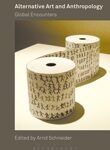Editorial | Winter 2018
Grant Kester
“. . . our concern is how one begins to look at these experiences as just the opposite: not for what they can’t do, but for everything they can do in a time in which it was said that nothing more could be done.”
Colectivo Situaciones, Genocide in the Neighborhood (2009) [1]
More often than not in contemporary art critical discourse activist or socially engaged practices are accused of a double failure, at the level of both politics (they never manage to precipitate the total revolution that is the single horizon of “real” political change in the avant garde lexicon) and aesthetics (they are seen as abandoning the necessary reflective distance between art and processes of social or political transformation). This perception exists at the highest levels of the institutional art world. We can observe it in the writing of Jacques Ranciére, which remains rooted in a fairly conventional notion of aesthetic autonomy derived from Schiller. As he argues in “Aesthetics and Politics: Rethinking the Link,” the aesthetic “promises a political accomplishment that it cannot satisfy.” Faced with this reality the artist is left with only two choices, “one of melancholy, with respect to the failure of the promise, another of play with its very uncertainty.”[2] Ranciére, of course, prefers the second option. While art can never successfully be linked with political praxis (for fear of sacrificing its unique critical power and plunging us into melancholic despair), it can at least “play” with this linkage in order to exhibit, for the viewer, an exemplary form of a-categorical resistance. This unfolds through a kind of performance by which the distanced viewer, observing modern art’s perpetual oscillation between two opposed positions (the disavowal of art’s social imbedded-ness on the one hand, and its surrender to social and political utility on the other), comes to realize the futility of all forms of categorical stasis (the parallels with Schiller’s concept of aesthetic education are evident here).
Notwithstanding his interest in artistic practices that trouble the distinction between art’s absolute freedom and its equally absolute subordination, Ranciére’s system ultimately rests on a reassertion of traditional aesthetic autonomy. Thus, the entire sequence identified by Ranciére (art withdrawing from the social on the one hand or surrendering to social or political utility on the other) is itself recaptured under the auspices of a conventional notion of detached aesthetic contemplation. What matters here are less the specific modes of artistic production generated in a given context than the extent to which this entire conceptual-historical movement can be apprehended by the viewer as an object lesson in conceptual ambiguity. In the absence of any operational relationship between art and social change, and the inevitable failure of all attempts by individual artists to realize the utopic power of the aesthetic, all that remains is a kind of vestigial trace of utopia, safely contained in the sequestered consciousness of the individual viewer. While Ranciére’s analysis offers a compelling framework for the interpretation of many forms of contemporary art, it also requires us to accept a number of implicit assumptions about the relationship between art and political or social transformation more generally. The “failure” of art, in this view, is pre-ordained precisely because autonomous aesthetic experience, for both Schiller and Ranciére, promises, or at least prefigures, the complete transformation of human subjectivity at its most basic level, and the consequent re-invention of society from the ground up in a new, utopic form. Here autonomy betrays its metaphysical origins as a principle of absolute purity and salvific deliverance that migrates from theology into early modern political theory and, eventually, into the domain of aesthetic philosophy. The aesthetic, understood in these terms, must always promise more than it can deliver precisely because its function is to hold out before us an unrealizable ideal towards which existing life should aspire, but which it can never hope to fully attain.
The essays in our current issue certainly provide validation for this view. Ou Ning’s Bishan Commune sought to embody the anarchist principles of Peter Kropotkin through the creation of a quasi-autonomous and frankly utopic cultural center in a rural Chinese village. After several years of work, however, the Commune was unable to survive the parallel pressures of Communist party apparatchiks, threatened by its independence, and incipient tourist-based gentrification. Pepón Osorio’s ReForm project sought to call attention to the closure of a much-beloved elementary school in the working-class, Puerto Rican Fairhill neighborhood of Philadelphia. While the resulting installation, at Tyler School of Art, helped to galvanize a “mini-polity” of neighborhood residents and children to explore the cultural politics of education the elementary school itself remained closed. And Yazan Khalili is the volunteer director of the Sakakini Cultural Center in Ramallah, which struggles to develop programming in a city that is simultaneously subjected to an economic blockade and the incipient privatization of the few remaining public spaces and resources in the Occupied Territories. Even Joseph Beuys’ work, discussed in Cara Jordan’s film review, can be seen through the lens of Ranciére’s “failure,” as the initiatives he developed (the Organization for Direct Democracy, the Free International University, etc.) proved unable to ignite a thoroughgoing revolution in German political culture.
Measured against the metric of total human emancipation all of these gestures can be seen as hopelessly inadequate (as can most of the global political activism of the last forty years). I’ve addressed the ideological dimension of this critique elsewhere, but here I want to briefly examine the implications it has for our understanding of artistic methodology.[3] In Ranciére’s view, any partial or incomplete political transformation is registered as failure. But what would it mean for us to re-frame our understanding of both success and failure around the aesthetic? In fact, I would argue that the individuals cited above, along with many others, are doing just that. This is the spirit conveyed by Colectivo Situaciones in their analysis of the Escraches developed by activist groups and art collectives in Buenos Aires during the late 1990s, to challenge the impunity of former members of Argentina’s military dictatorship. In a similar manner, the projects discussed in this issue of FIELD seek to explore the specific experiential and cognitive processes by which people come to think critically about the world around them, how this knowledge is communicated and made social and, finally, how it is enriched and complicated by materially grounded practices of creative production. While these artists retain a consciousness of the systemic forms of repression that impede the current realization of this critical vision, they are at the same time unwilling to accept Ranciére’s choice between melancholic resignation on the one hand and detached cognitive play on the other. Instead, they are defining a third option, in which the artist is able to work in proximity to mechanisms of political repression and potential transformation, while reinventing the generative, critical “promise” of the aesthetic itself.
[1] Colectivo Situaciones, Genocide in the Neighborhood, translated by Brian Whitener, Daniel Borzutzky and Fernando Fuentes, with an introduction by Brian Whitener (Oakland/Philadelphia: Chainlinks, 2009), p.78. Originally published as Genocida en el Barrio: Mesa de Escrache Popular (Buenos Aires: Tinta Limón, 2002).
[2] Jacques Ranciére, “The Politics of Aesthetics,” (September 2002) on the 16 Beaver website: http://16beavergroup.org/mondays/2006/05/06/monday-night-05-08-06-discussion-on-rancieres-politics-of-aesthetics/ (accessed on 3.7.18, p.11).
[3] See: “The Limitations of the Exculpatory Critique: A Response to Mikkel Bolt Rasmussen,” FIELD #6 (Winter 2017): http://stagetemple.field-journal.com/stagejanV2/issue-6/mikkel-bolt-rasmussen.







